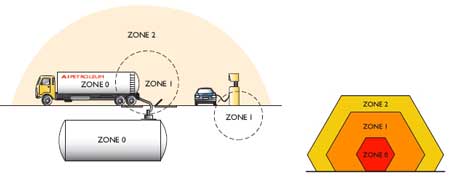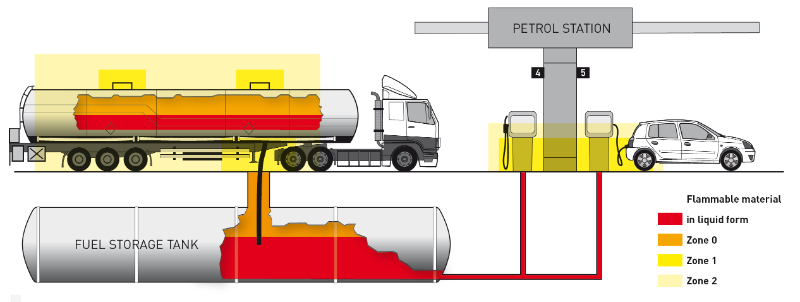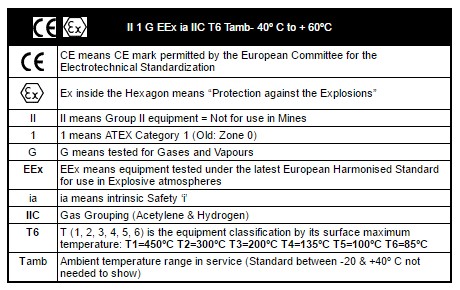
The Directive ATEX is named after the French "ATmospheres EXplosives" and has been mandatory from 1st July 2003.
The Directive covers a surprisingly large range of equipment, potentially including equipment used on fixed offshore platforms, in petrochemical plants, mines, flour mills and other areas where a potentially explosive atmosphere may be present. Areas, classified into zones (see below for specification) are devided into zones 0,1 and 2 for gas/mist and 20, 21 and 22 for dust. To equipment must have (in very broad guidelines): effective source of ignition, be intended for use in a potentially explosive atmosphere (air mixtures); and be under normal atmospheric conditions.
Comm-co is specialized in ATEX products. From Mobile phones to Computers, Customized products, CCTV, Scanners etc!
ATEX Zone definitions:
Zone 0 — An atmosphere where a mixture of air and flammable substances in the form of gas, vapor or mist is present frequently, continuously or for long periods.
Zone 1 — An atmosphere where a mixture of air and flammable substances in the form of gas, vapor or mist is likely to occur in normal operation occasionally.
Zone 2 — An atmosphere where a mixture of air and flammable substances in the form of gas, vapor or mist is not likely to occur in normal operation but, if it does occur, will persist for only a short period.
Temperature Classes:
T1: 450 Celsius max. permissible temperature at the surface
T2: 300 Celsius
T3: 200 Celsius
T4: 135 Celsius
T5: 100 Celsius
T6: 85 Celsius
ATEX Directives:
The ATEX Directive (94/9/EC) manages that makers are compelled to supply just legitimately ensured electrical gear to be utilized as a part of possibly touchy regions. From the specialists side there is another ATEX Directive (99/92/EC) that manages the necessities for enhancing the security and wellbeing insurance of laborers possibly at hazard from touchy environments. Both Directives are obligatory.

These Directives express that every region should be characterized by the potential perilous hazard so that exclusive proper ensured hardware can be utilized there. With the old CENELEC (past Directive), distinctive regions were isolated into three arrangements: Zone 2, Zone 1, and Zone 0 relying upon the level of hazard. With the ATEX Directive, each Zone is related to a Category, and each electrical gear is arranged by these classifications, affirming in which territories it can be securely utilized.

Is my light accurately ensured by ATEX?
To meet the demanding necessities of ATEX mandate 94/9/EC, Peli Lights are tried to guarantee that they represent no danger of start when working inside dangerous areas. Utilizing affirmed research centers, the lights are tried to guarantee that they will withstand thorough effect and drop tests, extreme ecological introduction and meet at least IP54 strong and fluid particles entrance security. Life span and security are guaranteed by plan.
Each light confirmed by ATEX ought to have a code imprinted on its body. This code exhorts the client with regards to the range in which it can be securely utilized without danger of blast.

Feel like needing more information about ATEX guidelines? Contact us!
Visit Atexshop.com for a huge collection of ATEX certified products

EXTRA INFORMATION:
Is it Allowed in an ATEX zone to wear a watch or hearing aids?
The IEC 60079-14: 2013, this issue is addressed.
Usually it is acceptable to wear in an ATEX zone 2 or 22 watches or hearing aids, which are not ATEX certified.
Making a risk assessment is necessary for zone 1 or 21.
This risk must be assessed whether wearing watches or hearing aids (which are not ATEX certified) is an acceptable risk.
For this, there will be an analysis of ignition must be made.
ATEX zone 0 or 20 are not allowed to wear watches or hearing aids unless this are certified according to ATEX 114 Directive (94/9 / EC and 2014/34 / EC).
